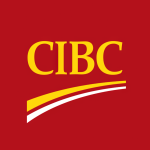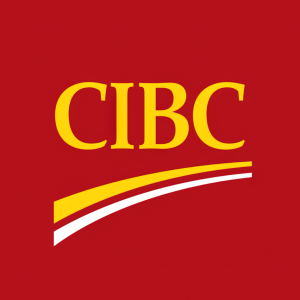Welcome to our dedicated page for Canadian Imperial Bank of Commerce SEC filings (Ticker: CM), a comprehensive resource for investors and traders seeking official regulatory documents including 10-K annual reports, 10-Q quarterly earnings, 8-K material events, and insider trading forms.
CIBC’s cross-border banking empire spans Canadian mortgages, U.S. commercial lending and global capital markets—so its SEC disclosures pack dense data on CET1 ratios, credit losses and dividend capacity. If you have ever searched "CIBC SEC filings explained simply" or wondered how currency swings flow through risk notes, you know the challenge.
Here you’ll find every document the Canadian Imperial Bank of Commerce files with EDGAR, from its annual Form 40-F—our platform tags it "CIBC annual report 10-K simplified"—to each 6-K that doubles as the "CIBC quarterly earnings report 10-Q filing" investors ask about. Need activity alerts? The moment executives file "CIBC insider trading Form 4 transactions" or "CIBC executive stock transactions Form 4", our AI flags them. Material announcements appear under "CIBC 8-K material events explained", while board pay details live inside the "CIBC proxy statement executive compensation" section.
Stock Titan layers AI-powered summaries, real-time updates and expert context on top of raw filings. Scan a side-by-side "CIBC earnings report filing analysis" that highlights net interest margin shifts, compare segment revenue in seconds, or set push notifications for "CIBC Form 4 insider transactions real-time". Whether you’re monitoring mortgage exposure or understanding CIBC SEC documents with AI, every filing type—40-F, 6-K, 8-K, Form 4 and more—lands here first, already distilled so you can act on insight, not pages.
Canadian Imperial Bank of Commerce describes the terms and risks of its Leveraged Index Return Notes (LIRNs), which are senior unsecured debt securities linked to one or more equity indices or exchange-traded funds. These notes do not pay interest, are not principal protected, and repayment depends both on the performance of a specified “Market Measure” and on CIBC’s creditworthiness.
The document explains that investors may lose all or a significant portion of their investment if the linked index or fund falls below a defined threshold, and returns may also be capped or subject to an automatic call feature that can shorten the investment term. It details how starting, observation, and ending values are calculated, how participation rates, caps and call premiums work, and how LIRNs can be affected by market disruptions, liquidity, currency moves, basket structures and credit spreads.
Extensive risk disclosures cover valuation uncertainties, limited or no secondary market, hedging and conflict-of-interest considerations with affiliated dealers, the lack of rights in the underlying indices or funds, and complex U.S. and Canadian tax treatment. Overall, the product is positioned as a complex, high-risk market-linked note suitable only for investors who understand equity and ETF-based derivatives and can tolerate the potential for full loss of principal.
Canadian Imperial Bank of Commerce is offering $2,204,000 of capped leveraged buffered S&P 500® Index-linked notes due September 29, 2027. Each $1,000 note is unsecured, does not pay interest, and returns an amount at maturity based on the S&P 500® performance from the trade date to September 27, 2027.
If the index rises, holders receive 1.5 times the index gain, capped at a maximum settlement amount of $1,233.55 per $1,000 note, which corresponds to a cap level of 115.57% of the initial index level of 6,705.12. If the index falls by up to 12.50%, investors receive back $1,000 per note. If the index declines by more than 12.50%, principal is reduced using a buffer rate of approximately 114.29%, and the repayment can fall to zero.
The bank’s estimated value on the trade date is $994.20 per note, below the $1,000 issue price, reflecting selling, structuring and hedging costs. The notes are not insured, are subject to the credit risk of CIBC, will not be listed on an exchange, and may have limited or no secondary market liquidity. U.S. and Canadian tax treatment is complex and may change.
Canadian Imperial Bank of Commerce is offering $1,867,000 of senior market-linked notes, each with a $1,000 face amount, tied to the Nasdaq-100 Index® under a 424(b)(2) pricing supplement. The notes are auto-callable on annual Call Observation Dates from November 30, 2026 through November 26, 2029, with fixed Call Premiums of 8.15%, 16.30%, 24.45% and 32.60% of face amount if the Index is at or above the Starting Level.
If not called, investors receive full principal at maturity only if the Index decline does not exceed 10%; below the 90% Threshold Level, they have 1‑to‑1 downside exposure beyond that buffer and may lose up to 90% of principal. The notes pay no interest or dividends, are unsecured obligations subject to CIBC’s credit risk, and will not be listed on an exchange. The issuer’s estimated value is $956.60 per note, below the $1,000 offering price, reflecting selling, structuring and hedging costs.
Canadian Imperial Bank of Commerce is issuing senior market-linked notes tied to the lowest-performing of Target, Chipotle Mexican Grill and NIKE Class B stock, with a total offering of $1,880,000 at $1,000 per security. The notes pay a quarterly contingent coupon at 25.80% per annum only if the lowest-performing stock on each determination date is at or above its coupon threshold, set at 75% of its starting price, with a “memory” feature that can make up previously missed coupons.
From November 2026 to August 2028, the notes are automatically called at face value plus due coupons if the lowest-performing stock is at or above its starting price. If not called, principal is protected at maturity only if the lowest-performing stock stays at or above 75% of its starting price; below that level, investors lose more than 25%, up to all principal. The notes are unsecured obligations of CIBC, have an estimated value of $916.50 per security, are not listed on any exchange, and are subject to CIBC’s credit risk and complex U.S. and Canadian tax treatment.
Canadian Imperial Bank of Commerce (CIBC) is offering senior global medium‑term notes that are market-linked, auto-callable and carry contingent coupons with a memory feature. The securities are tied to the lowest performing of Amazon.com, Alphabet Class A and Meta Platforms Class A stock. Each security has a $1,000 face amount, with a Contingent Coupon Rate of at least 17.50% per annum, payable quarterly only if the lowest performing stock on the relevant determination date is at or above 70% of its starting price. Automatic call can occur quarterly from June 2026 through September 2028 if the lowest performing stock is at or above its starting price, returning face amount plus due coupons. If the notes are not called and the lowest stock ends below 70% of its starting price at maturity in December 2028, principal is reduced in full proportion to that decline, potentially to zero. CIBC’s estimated value on the pricing date is expected to be at least $900 per security, below the $1,000 offering price.


